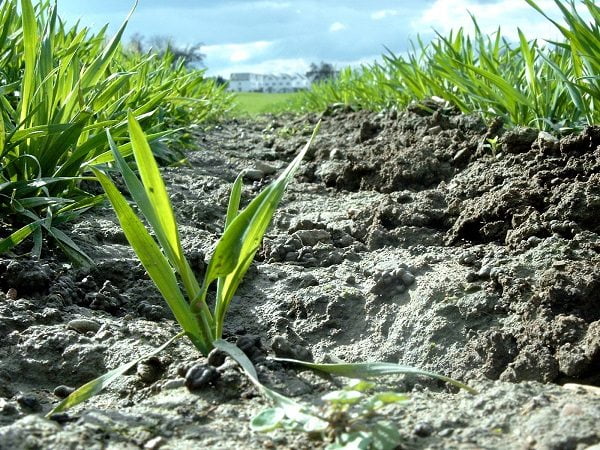

Economy
Sustainable investment: what are you investing for?
Whether it’s for growth, income or your children’s long-term prosperity, there are a range of investment styles for you to consider.
This article originally appeared in Blue & Green Tomorrow’s Guide to Sustainable Investment 2014.
Deciding what you’re investing for is crucial in making your investments align properly with your aims. Many people want to simply grow their long-term wealth; others draw income from their investments. Among those interested in sustainability, the long-term prosperity of their children is often their driver. Meanwhile, some investors are less concerned about making a return, and instead invest with philanthropic goals in mind.
Whatever you want to get out of your investments, though, an important first step should be to speak to an independent financial adviser (IFA) who will explore the different styles in detail. This process is called a fact find and includes questions on goals and objectives, to understand what’s important to the client, and risk, in order to determine a client’s capacity for loss and how much volatility they are happy with. Most fact finds should also include a question on sustainable, responsible and ethical investment, to find out whether the client has any ethical, environmental, social or religious considerations.
Many IFAs are not knowledgeable enough to give advice on sustainable investment. We’ve heard anecdotes from thought leaders in the sustainability space whose own advisers have actively tried to put them off investing in this way. But with 76% receiving requests from clients for this kind of advice, according to Blue & Green Tomorrow’s fourth annual Voice of the Adviser survey, the relatively small market share of sustainable investment compared to the mainstream is almost certainly because of a supply problem – and not because of the lack of demand.
There are, of course, a number of IFAs who specialise in this area. Rather than asking the standard question to see if a client is interested, they go into detail about how adopting a sustainability approach pays off in the long-term. Even with all these extra considerations, the first question is always to do with why the client wants to invest. But once you have established this, along with the risk profile and sustainable investment analysis, an adviser has a good foundation to put together a compelling portfolio.
The three broad investment styles are investing for growth, income and children. While there are certainly crossovers, each has its own approach and usage. Often, a mix of two or three different styles can provide useful diversification for an investor. With the help of Surrey-based financial adviser Richard Essex, a consultant at Grayside Ltd, we’re going to outline all three styles to help you find which is most appropriate for you.
Investing for growth
One of the most popular approaches, investing for growth means making your money grow considerably by investing in currently undervalued companies, or stocks, that are expected to be more profitable in the future. This chimes particularly well with investors who are interested in sustainability. Problems such as climate change, air pollution, water shortages and biodiversity loss are only expected to increase in prominence in the future, so companies providing solutions to these are likely to become ever more profitable.

Photo: Jonathan Ruchti via stock.xchng
Growth investors tend to reinvest any profit they make or dividends they receive, and by definition, will have a long-term outlook – so years rather than months. While many investors ask their advisers to put their money into investment funds, others choose to invest directly in companies. In this scenario, growth investors would likely opt for profitable companies whose share price is rising and then buy more shares using the dividend they receive. Investing in just one company does carry with it quite some risk, though; if something goes wrong, you could lose most if not all of your money.
Richard Essex says: If somebody’s investing for growth and they’re happy with a little bit higher risk, thematic funds are extremely good – firms like WHEB and Pictet, because they deal with specific sustainability themes that they think are going to have a positive consequence, but also are going to make money. I would often put some thematic funds in a portfolio – obviously depending on the risk profile.
Investing for income
An investment strategy focused on income means the investor is receiving regular payments – usually either quarterly or monthly – from the company or fund they invest in. Whereas growth investors may reinvest these payments, income investors would withdraw them.

Photo: Stephen Davies via stock.xchng
If you’re investing for growth and your fund has a bad year, you’d be less worried than if you were drawing an income out of that fund. If the market fell in this scenario, you’d have to sell shares to provide the income you want. There is also no guarantee that your fund will recover. Therefore, with income investment protecting the downside is even more important – so you’d generally want to go for less risky investments.
Sustainability investors looking through an environmental, social and governance (ESG) lens may find that this process helps protect the downside and reduce volatility. There is also research to suggest there is less risk if a company is looking at its ESG footprint.
Richard Essex says: When a client is drawing income regularly, it’s more important to protect the downside. In this respect, I think there is real value in investing in funds that include ESG factors as well as the more conventional financial analysis. This extra dimension can help to reduce the downside risk of a fund further. One suggestion here might be to invest in a ‘best of sector’ fund. This would be a fund investing in large companies from across the spectrum that are taking a lead in sustainability.
Investing for children
While investing for growth and income are the two most common investment strategies, the primary driver for many investors is a desire to leave something to their children or grandchildren. This wish chimes very well with sustainable investment, which is all about tackling the biggest sustainability challenges so that our ancestors – the client’s children or grandchildren included – inherit a planet, society and an economy that are not just healthy but flourishing.

Photo: Benjamin Earwicker via stock.xchng
Anecdotal evidence suggests many investors adopting this approach want funds that not only screen out morally questionable sectors like tobacco and weapons, but invest positively in sectors that are crucial to future prosperity like renewable energy and medicine.
Richard Essex says: Asking clients if they are interested in leaving some sort of positive legacy can be quite a useful approach. When you put the idea in their head, they are generally quite receptive. It’s something that people grab onto very quickly. It gives another dimension to investment, because I think a lot of people are interested investing for children. Many people are quite blasé about the whole investment process, so if you can say there are funds around that are looking at an extra factor as well, that is very useful.
Conclusion
The best, most balanced investment portfolios would tend to deploy a mix of styles so as to nullify the potential risks associated with adopting one on its own. What is clear is that if you have a desire to invest sustainably, you can do so with growth, income and your children in mind.
Richard Essex is a financial consultant at Grayside Ltd, where he specialises in green and ethical advice. He is the author of the soon-to-be-published book: Invest, Feel Good, And Make a Difference.
Further reading:
Are we investing in the future we want for our children and grandchildren?
Ethical investors are not tree huggers, but air breathers (and responsible global citizens)
‘We need investment that prioritises long-term wellbeing for people and planet’
Happy birthday, Will! Being 4 years old in 2013 compared to 1976


 Environment10 months ago
Environment10 months agoAre Polymer Banknotes: an Eco-Friendly Trend or a Groundswell?

 Environment11 months ago
Environment11 months agoEco-Friendly Home Improvements: Top 7 Upgrades for 2025

 Features9 months ago
Features9 months agoEco-Friendly Cryptocurrencies: Sustainable Investment Choices

 Features10 months ago
Features10 months agoEco-Friendly Crypto Traders Must Find the Right Exchange




























